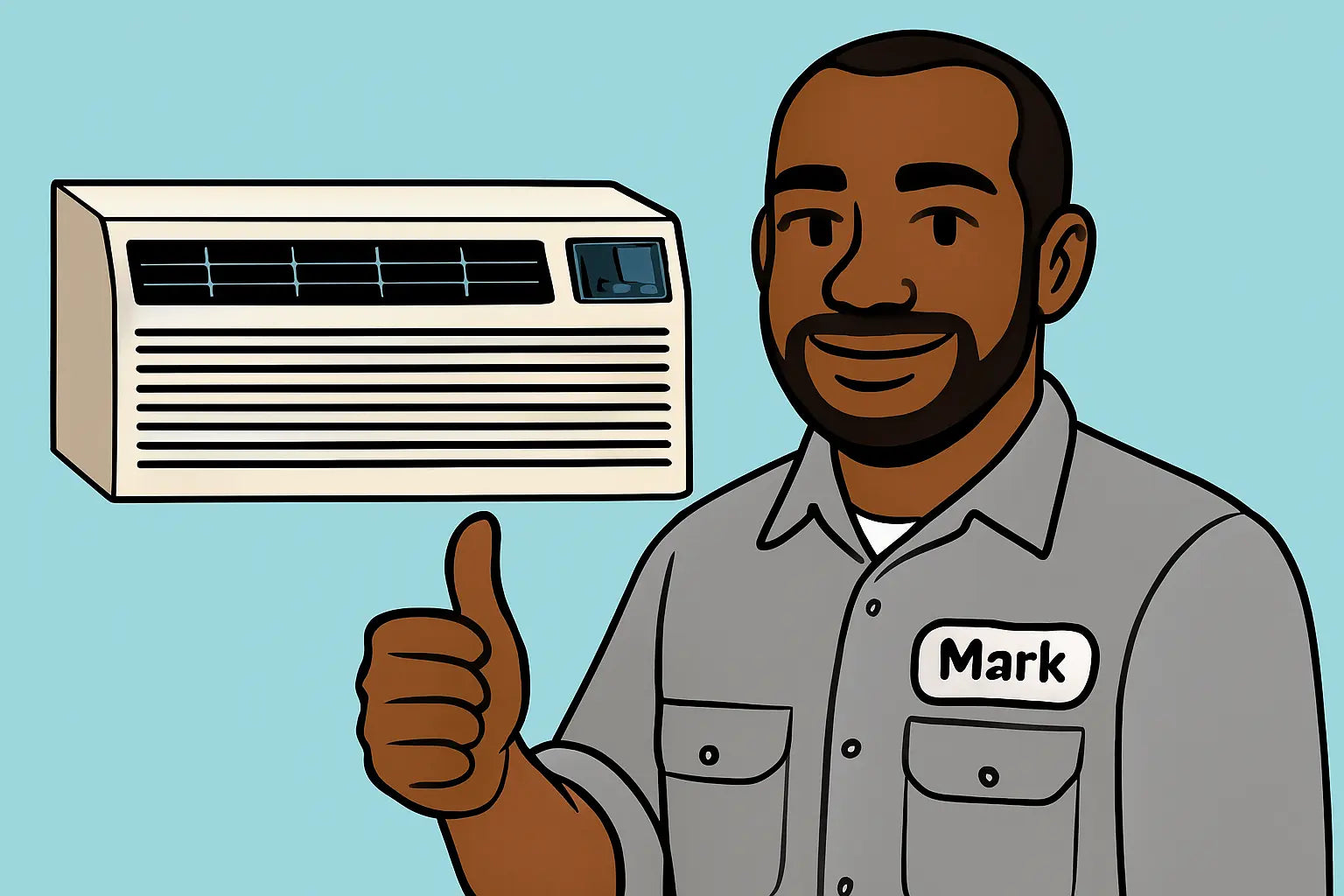Intro from Mark
Hey folks, Mark here. I love a good DIY project as much as the next guy, but there’s a thin line between “I fixed it!” and “Well… now it’s worse.” PTAC units—like your trusty Amana—are tough machines, but they’ve also got high-voltage parts, refrigerant systems, and delicate electronics that don’t play nice if you mess with them the wrong way. Let’s figure out when you can roll up your sleeves and when it’s time to call the cavalry.
Common DIY-Friendly Amana PTAC Fixes
Filter Cleaning or Replacement
One of the easiest jobs around. A clogged filter chokes airflow and makes the unit work harder. Energy Star’s maintenance tips show you exactly how often to swap it out.
Thermostat Settings Check
Sometimes your “repair” is just turning the temperature to where you actually want it.
Cleaning Coils
Dirty coils can cause cooling or heating loss. If you’re comfortable with a vacuum and a coil brush, HVAC.com’s coil-cleaning guide is all you need.
Unclogging the Drain
If you see water pooling, the drain pan or line might be blocked. A wet/dry vac can often clear it.
When DIY Turns Risky
Electrical Repairs
We’re talking wiring, relays, breakers—stuff that can knock you on your backside if you’re not careful. The Electrical Safety Foundation International makes it clear: if you don’t know the right testing and lockout procedures, leave it to the pros.
Refrigerant Work
Refrigerants require EPA certification to handle legally. Even if you could buy the stuff, the wrong pressure can destroy your compressor. The EPA’s refrigerant rules explain why this is a no-go for most homeowners.
Control Board Replacements
Modern PTACs have sensitive electronics. A slip with a screwdriver or static discharge can fry the board.
Persistent Error Codes
If you’ve tried the basic troubleshooting and the error code keeps coming back, you’re likely dealing with a deeper issue. Angi’s HVAC troubleshooting advice can help you decide when to escalate.
Benefits of Calling a Professional
-
Correct diagnosis on the first visit
-
Access to specialized tools and parts
-
Warranty protection (some brands void coverage if you DIY)
-
Safer handling of high-voltage and refrigerants
How to Choose the Right Pro
-
Look for licensed HVAC technicians with PTAC experience
-
Check reviews on trusted platforms
-
Ask about warranty on labor and parts
-
Get a written estimate before work starts
The Better Business Bureau is a good place to vet contractors before letting them near your system.
Wrapping Up from Mark
I’m all for saving a buck and getting my hands dirty, but I’m also all for not electrocuting myself or wrecking a $1,000 machine. Know your limits, play it safe, and when in doubt—call the pros. And if your old PTAC is more trouble than it’s worth, you might want to check out the Amana Distinctions 12,000 BTU PTAC with 3.5 kW electric heat. It’s built tough, easy to maintain, and won’t give you headaches if you treat it right.
Thinking it might be time to upgrade your system? Visit my guide: Knowing When to Replace Your Amana PTAC.
Until next time,
- Mark out! ✌️🔧







